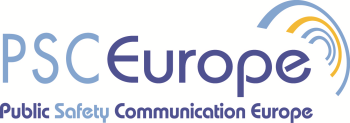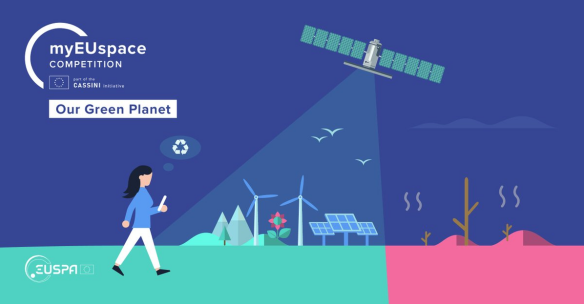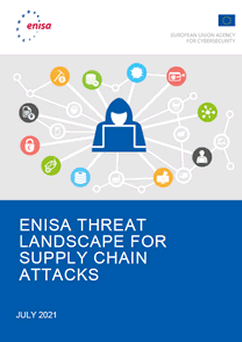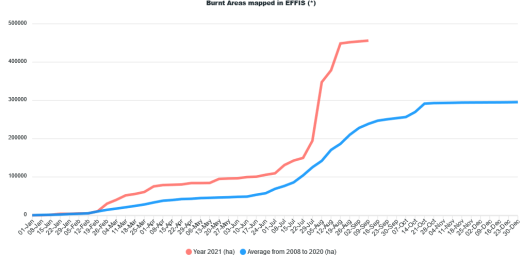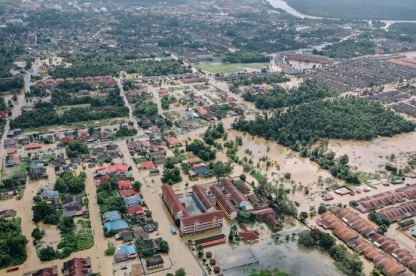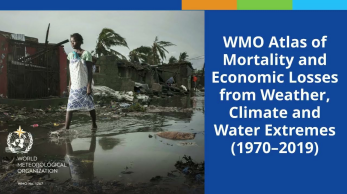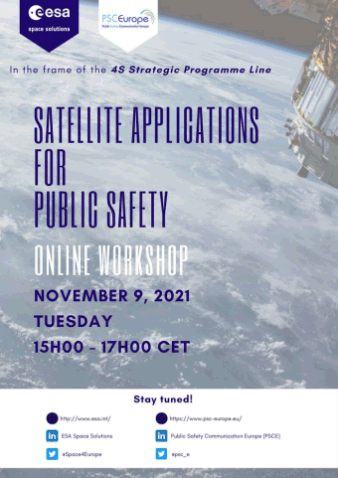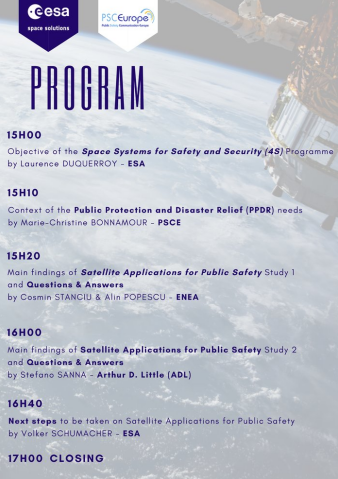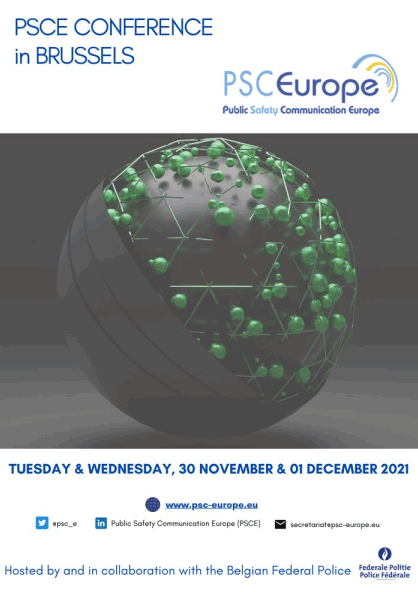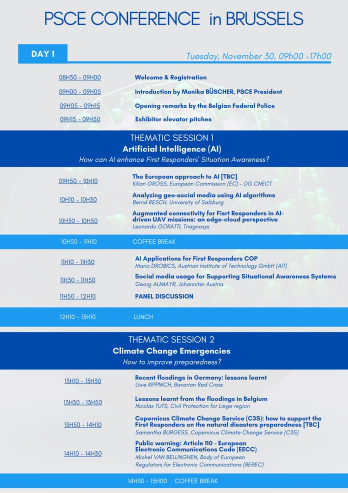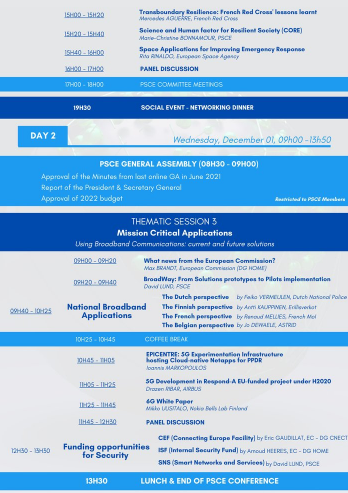|
|||
|
|
|||
|
Dear Reader, please find our Newsletter (October 2021) to share with you the latest EU news and to keep you updated on PSCE activities in Public Safety Communications! |
|||
|
|
|||
Table of contents |
|||
|
|
|||
|
🇪🇺 EU News
📰 PSCE News
🚀 Project corner
|
|||
|
|
|||
EU News |
|||
|
|
|||
EUSPA launches #MyEUSpace competition 2021 |
|||
|
|||
|
Last 1 September 2021, the European Union Agency for the Space Programme (EUSPA) announced the 2021 edition of its contest "#myEUSpace". The objective of the competition is to support the development of innovative commercial solutions – such as mobile apps or hardware-based solutions for example wearables, asset management and tracking solutions, robotics etc. – that are leveraging EU Space data from Galileo and/or Copernicus. The background is that Copernicus, the European Earth Observation Programme, offers information services that draw from satellite Earth Observation and in-situ data. This information helps to better understand how and in what way our planet may be changing, and how this might influence our daily lives. Copernicus also boosts commercial applications in many different sectors by providing full and open access to Earth observation data and added value information. In this context, the European Union Agency for the Space Programme (EUSPA), is organising the #myEUspace competition (with a 1 million €-prize pool and 54 selected teams) that aims at encouraging EU entrepreneurship and business creation by promoting the development of innovative solutions, products or services based on Galileo, Copernicus and their synergies as well as synergies with other technologies. Each challenging team can compete with a proposed solution in one of the 6 challenges (among which 2 are related to the EU Green Deal objectives) and in one of the 2 possible tracks ((i) From Idea to Prototype/Customer validation or (ii) From Prototype to Product/Market entry). For instance, in [the] "Our Green Planet" challenge "environmental entrepreneurs" are tasked with developing trailblazing solutions to address environmental challenges, promote sustainable life, consumption and production, but also mitigate climate change, by relying on space services from the EU Space Programme. All the information about Registration, Timeline, Criteria and more is available here. You can also consult a kind of FAQ made by EUSPA through its Clarification Note #1 and Clarification Note #2. |
|||
|
|||
|
|
|||
ENISA publishes its "Threat Landscape for Supply Chain Attacks" |
|||
|
|||
|
Last 29 July 2021, the European Union Agency for Cybersecurity (ENISA) published its report on the "Threat Landscape sor Supply Chain Attacks" that aims at mapping and studying the supply chain attacks that were discovered from January 2020 to early July 2021. "Based on the trends and patterns observed, supply chain attacks increased in number and sophistication in the year 2020 and this trend is continuing in 2021, posing an increasing risk for organizations. It is estimated that there will be four times more supply chain attacks in 2021 than in 2020. With half of the attacks being attributed to Advanced Persistence Threat (APT) actors, their complexity and resources greatly exceed the more common non-targeted attacks, and, therefore, there is an increasing need for new protective methods that incorporate suppliers in order to guarantee that organizations remain secure." In the present Report, you will get information on what is a supply chain attack (and its lifecycle) and the prominent supply chain attacks, you will read analysis of supply chain incidents, and you will be given recommendations. |
|||
|
|||
|
|
|||
The Earth has entered the era of "megafires" |
|||
|
|||
|
Gorny Ulus, Siberia (Rusia), 27/07/2021. DIMITAR DILKOFF / AFP |
|||
|
The US National Aeronautics and Space Administration (NASA), as well as the US National Oceanic and Atmospheric Agency (NOAA), already announced that July 2021 was the warmest month ever recorded on Earth. Last Friday 13 August, Rick Spinrad, Administrator of the NOAA under line that "In this case, first place is the worst place to be. July is typically the world’s warmest month of the year, but July 2021 outdid itself as the hottest July and month ever recorded. [...] This new record adds to the disturbing and disruptive path that climate change has set for the globe." As a matter of facts, on all the continents, fires of unprecedented size have ravaged several million hectares of forest in a few weeks. And there is no surprise: Jean-Luc Dupuy, Director of Research at the French National Institute for Agriculture, Food and the Environment (INRAE) and a specialist in forest fire modelling, explains that "we have known for a long time that global warming will increase the frequency and extent of fires" and that "this is particularly clear in the United States, where there are solid statistics showing that the number of large fires has increased sharply since the 1980s. We know that this increase is linked, on the one hand, to the increased drying out of vegetation and, on the other hand, that warming lengthens the periods of the year during which vegetation dries out.
|
|||
|
|||
|
On the scale of the European Union countries, the situation is bad, since, as of 19 August, nearly 440 000 hectares of forest had been burnt (compared with an average of 189 000 ha between 2008 and 2020), which is a 2,3-fold increase according to the data published by the European Forest Fire Information System (EFFIS) of the European Commission's Joint Research Centre (JRC). |
|||
|
|||
|
|
|||
Disastrous floods: how to better estimate risks and reduce impacts |
|||
|
|||
|
Last 10 August 2021, the EC's Joint Research Centre (JRC) contributed to a Springer Nature Journal 's Review on "Causes, impacts and patterns of disastrous river floods" that highlights what can turn a flood event into a disaster, and provides recommendations on measures that can be taken to reduce impacts. The JRC states that "Extreme floods are already getting more frequent and can have unexpected catastrophic consequences for EU Member States, as demonstrated by recent dramatic floods in Europe in July 2021". Therefore, the Review focuses on the following key points: 1 – The causative mechanisms of floods with disastrous consequences tend to be different from those of non-disastrous floods, and show anomalies in one or several flood – and loss – generating processes. 2 – Past trends in flood hazard show both upward and downward changes. In some regions, anthropogenic warming is already strong enough to override other drivers of change. 3 – Flood hazards and impacts are projected to increase for many regions around the globe. Future flooding hotspots are expected in Asia and Africa, owing to climate and socio-economic changes. 4 – Reducing vulnerability is a particularly effective way of reducing flood impacts. Global decreases in flood-affected people and fatalities since the mid -1990s (despite a growing population) are signs of effective risk reduction. 5 – Disastrous floods often come as a surprise. Effective risk reduction requires an understanding of the causative processes that make these events distinct and to address the sources of surprise, including cognitive biases. To cope with the increase of disastrous floods, the EU is coordinating through the JRC the European Flood Awareness Systems (EFAS), which is part of the Copernicus Emergency Management Service (CEMS). EFAS is the first operational pan-European flood forecasting and monitoring system. |
|||
|
|||
|
|
|||
Weather-related disasters increase over past 50 years, causing more damage but fewer deaths |
|||
|
|||
|
Last 31 August, the World Meteorological Organization (WMO) released its Atlas of Mortality and Economic Losses from Weather, Climate and Water Extremes (1970-2019) that is the most exhaustive compilation to date of fatalities and economic costs from natural hazards. It provides comprehensive details of recorded disasters and their impacts, both at global and regional level. It gives statistics for the entire 50 year period, as well as a decadal breakdown which shows the evolution of disasters in our changing climate. According to WMO, "a disaster related to a weather, climate or water hazard occurred every day on average over the past 50 years – killing 115 people and causing US$ 202 million in losses daily. The number of disasters has increased by a factor of five over the 50-year period, driven by climate change, more extreme weather and improved reporting. But, thanks to improved early warnings and disaster management, the number of deaths decreased almost three-fold". Mami Mizutori, Special Representative of the Secretary-General for Disaster Risk Reduction and Head of UNDRR puts the improvement of warning systems in perspective: "More lives are being saved thanks to early warning systems but it is also true that the number of people exposed to disaster risk is increasing due to population growth in hazard-exposed areas and the growing intensity and frequency of weather events". Even more, she appeals to "more international cooperation [...] to tackle the chronic problem of huge numbers of people being displaced each year by floods, storms and drought [and] greater investment in comprehensive disaster risk management ensuring that climate change adaptation is integrated in national and local disaster risk reduction strategies." In Europe, from 1970–2019, WMO recorded 1 672 disasters that cumulated 159 438 deaths and US$ 476.5 billion in economic damages. Although floods (38%) and storms (32%) were the most prevalent cause in the recorded disasters, extreme temperatures accounted for the highest number of deaths (93%), with 148 109 lives lost over the 50 years. The two extreme heatwaves of 2003 and 2010 accounted for the highest number of deaths (80%), with 127 946 lives lost in the two events. These two events skew the statistics on the number of deaths in Europe. The 2003 heatwave was responsible for half of the deaths in Europe (45%) with a total of 72 210 deaths within the 15 affected countries. |
|||
|
|||
|
|
|||
PSCE News |
|||
|
|
|||
PSCE co-organises with ESA an online workshop on Satellite Applications on Public Safety (November 9, 2021) |
|||
|
|||
|
PSCE is happy to announce our upcoming workshop on Satellite Applications for Public Safety in collaboration with ESA. The workshop will take place on 9 November 2021 and be the occasion to introduce the ESA 4S programme (Space Systems for Safety and Security) and share the results of two studies led by ENEA and ADL to identify the needs of end-users. Registration is open to all and free of charge. |
|||
|
|||
|
|
|||
PSCE organises its next conference in Brussels (30 November – 1 December) |
|||
|
|||
|---|---|---|---|
|
|||
|
|||
|
|||
|
|
|||
|
PSCE Newsletter - October 2021
October 08, 2021
Full View





